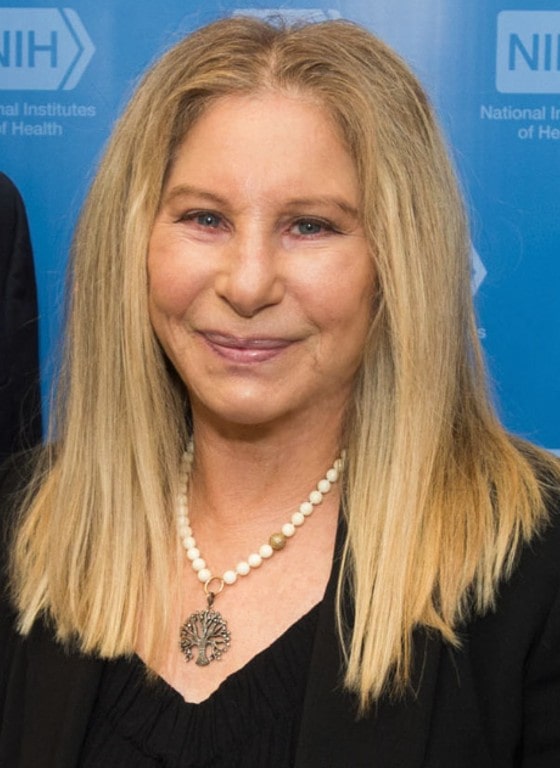The name Barbara Streisand is widely recognized. The diva, who is among the best-selling recording artists of all time, is also well-known for her political opinions and charity endeavors. A few years ago, the celebrity blended the two by publicly speaking out and fighting a fatal illness with which she is intimately familiar.
The Women’s Heart Alliance was founded in 2014 by the Oscar-winning actress and singer and billionaire Ron Perelman. Streisand claimed she was “totally astonished” to see that bias persisted in the hospital emergency room, which was brought on by the gender gap in heart health.
When the Barbra Streisand Women’s Heart Center opened at Cedars-Sinai Heart Institute in Los Angeles, the singer of Evergreen vowed to enhance research into women’s heart health there.
“I read an article regarding gender differences in heart health in The New York Times fifteen years ago “79-year-old Streisand explains.

“I was astounded to find that women don’t receive the same attention in diagnosis and treatment as males and that cardiovascular disease kills more women than all forms of cancer combined.
“I’ve always found it incomprehensible why men and women shouldn’t be treated equally.
Many people are unaware that women are more likely than males to pass away within a year after suffering a heart attack.
The actress went on to note that since heart illness is perceived as a “man’s disease,” it has been said that doctors are frequently more “dismissive” when women complain about symptoms that could potentially be caused by heart trouble.
“For so many years, heart illness was assumed to be a man’s condition, and women with comparable or more unusual symptoms were frequently misdiagnosed as having stomach issues or being emotionally upset,” the Grammy Award winner continued.”
However, Streisand has a personal connection to the topic of heart health because she lost her mother Diana to the condition when she was 81 years old.
The actress claims that misconceptions about the ailment were leading women to pass away too soon in an interview with InStyle magazine about her mother’s health and the urgent bypass surgery that she required.
The condition is frequently misdiagnosed because many individuals are unaware that women’s symptoms are frequently different from and more subtle than men’s. Instead of the Hollywood depiction of crushing chest pain, which is more typical in males, our early symptoms of a heart attack may include nausea, backaches, acute exhaustion, or shortness of breath,” she explains.
Streisand has started a series of efforts to persuade women to frequently get their hearts examined, especially if they are exhibiting symptoms and want to take “proactive” measures to reduce their risk in an effort to challenge these conventional notions.
Heart disease was dubbed the “woman killer” in one campaign by The Women’s Heart Alliance, while a different campaign from the previous year urged young women and women of color in particular to be aware of the symptoms.
Regarding the “gender gap” in heart health in the UK, the British Heart Foundation has also made comments. The British Heart Foundation’s Associate Medical Director, Dr. Sonya Babu-Narayan, stated: “Decades of study have changed the likelihood that someone will survive a heart attack. However, the probabilities are different if you’re a woman.
Bias and Biology briefing revealed that women are 50% more likely than men to obtain the incorrect initial diagnosis for a heart attack. Women are also less likely to receive medicines after a heart attack to help prevent another attack.

The organization says that while heart attack symptoms might differ from person to person, the following are the most typical warning signs:
chest pain or discomfort that appears out of nowhere and persists. It could feel like squeezing, pressure, or tightness.
Your left or right arm, as well as your neck, jaw, back, or stomach, could become painful.
feeling queasy, perspiring, dizzy, or out of breath.
According to the NHS, one of the primary reasons of a heart attack is cardiac disease. This is because a buildup of fatty substances in the coronary arteries causes the blood supply to the heart to become obstructed or stopped.
These fatty deposits can cause the walls of the arteries to become furred over time. The fatty deposits are called atheroma, and the process is known as atherosclerosis.
People can adopt certain lifestyle choices to improve their health and reduce their risk of heart attack and atheroma accumulation. These consist of:
maintaining a balanced, healthful diet
Practicing physical activity
quitting smoking
regulating blood sugar and cholesterol levels.
Streisand has reportedly worked out with the same trainer for more than 30 years and keeps a close eye on her nutrition. She is an advocate for leading a healthy lifestyle.
“I include fruit, veggies, and greens in most meals,” she continued. I enjoy eating fish and poultry, but occasionally I’ll replace meat with plant-based protein.”
“I adore eating, and it doesn’t take much to make me lose focus on my intentions, “she jokedly remarked.
Other health advantages of maintaining heart health include lowering your risk of stroke and dementia.

